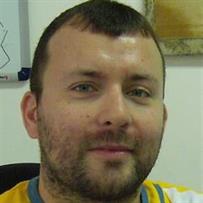Colloidal Plasmonic Semiconductor Nanocrystals

Colloidal heavily doped semiconductor nanocrystals are an emerging class of easily processable, dual-functional nanomaterials, which synergistically integrate the distinctive optoelectronic properties of low-dimensional semiconductors and localized surface plasmon resonances (LSPRs) typical of noble metals [1,2].
The plasmonic behavior originates from excess free carriers associated with constitutional vacancies or ionized dopant atoms in the lattice, leading to intense extinction bands in the near-infrared (NIR) and mid-infrared (mid-IR) spectral regions.
In this realm, copper chalcogenides and transition-metal oxides are convenient model systems for assessing the emergence of LSPR due to self-doping at the nanoscale, as free carrier concentration in nanocrystals can be adjusted not only by selecting crystal phase and composition in the synthesis stage, but also by performing selective solid-state red-ox and cation-exchange reactions [1,2] In this talk, I will report on surfactant-assisted nonaqueous routes to anisotropic-shaped copper sulfide (Cu2-xX) and tungsten oxide (WO3-x) nanocrystals, trapped in selectable stoichiometric and nonstoichiometric crystal structures, which can accommodate adjustable densities of excess free holes or electrons, respectively.
These nanocrystals are demonstrated to support intense, size- and shape-tunable LSPRs at NIR to mid-IR wavelengths [3,4]. As a consequence of the unique high level of doping and monodispersity achievable, coherent breathing modes are detected in transient absorption experiments at LSPR wavelengths. The LSPR features of the nanocrystals and their composition and shape dependence will be explained within the theoretical framework of the Discrete Dipole Approximation (DDA) method [3].
Besides expanding the current library of tailored metal chalcogenide and oxide nanostructures and deepening the understanding of LSPR properties in these materials, our achievements are likely to stimulate progress in all numerous fundamental and practical fields that already greatly benefit from the availability of tailored colloidal nanocrystals of semiconductor and plasmonic materials.
[1] J.A. Faucheaux, A. L. D. Stanton and P.K. Jain, J. Phys. Chem. Lett. 5, 976 (2014)
[2] A. Comin and L. Manna, Chem. Soc. Rev. 43, 3957 (2014).
[3] Y. Xie, L. Carbone, C. Nobile, V. Grillo, S. D'Agostino, F. Della Sala, C. Giannini, D. Altamura, C. Oelsner, C. Kryschi and P.D. Cozzoli, ACS Nano 7, 7352 (2013)
[4] (a) Y. Xie, L. Carbone, C. Nobile, V. Grillo, C. Giannini, D. Altamura, A. Rubio, A. Varas, P. D. Cozzoli Manuscript in preparation; (b) R. Scarfiello, C. Nobile, V. Grillo, C. Giannini, T. Sibillano A. Rubio, A. Varas, P. D. Cozzoli, Manuscript in preparation
